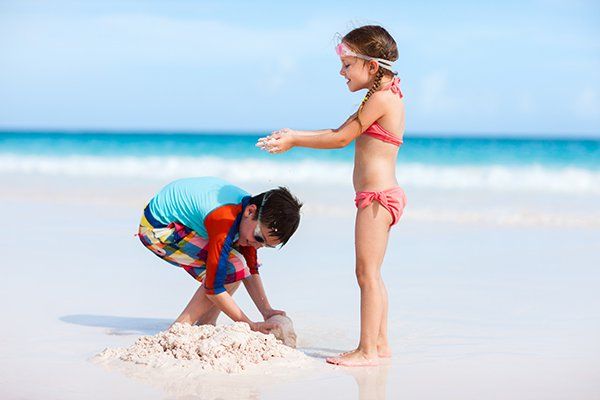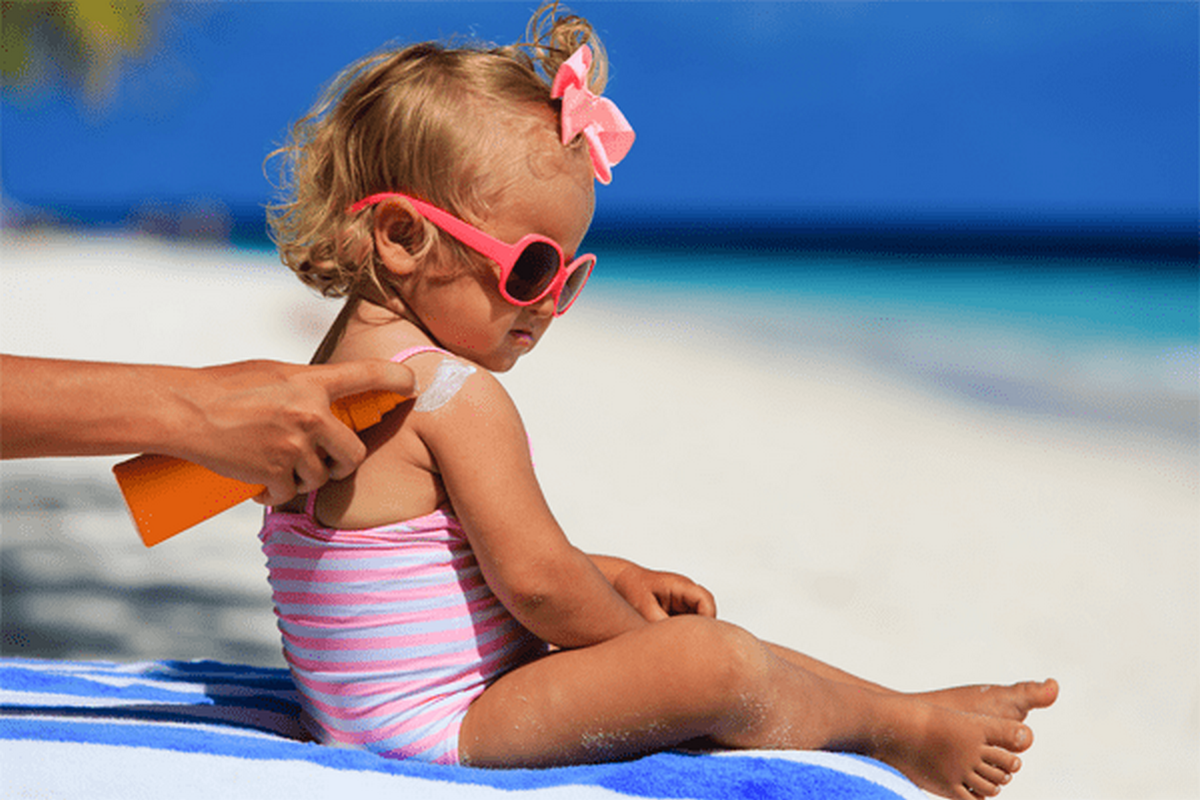Sunscreen guide for babies, infants and children

Summertime and time for baby and children’s sunscreen. The sun is essential for a healthy mental and physical development. However, prolonged or improper sun exposure may have adverse consequences in the future. The skin of infants and children is very sensitive as body has not yet created the defense systems in order to shield skin. Solar radiation acts cumulatively over time, particularly for those who live in sunny countries. Many studies have revealed that repeated sunburns increase the chances for future skin ailments and cancer. Thus, the right baby sunscreen in absolutely necessary for a healthy skin.
Solar radiation
Solar radiation is divided into two main types, the infrared (IR) and ultraviolet radiation (UVA and UVB). The UVB radiation is responsible for superficial burns and tanning and it is more pronounced especially at midday. UVA radiation is responsible for aging and skin cancer and is constant throughout the day. Proper sun radiation should contain both protective filters against UVA and the UVB radiation. No sunscreen provides 100% protection from UV radiation (UVA and UVB). The index SPF (Sunburn Protection Factor) shows protection against UVB rays while the index PA or PPD indicate protection from UVA radiation. According to the legislation, a sunscreen in order to be considered that sufficiently protects against UVA radiation, the UVA index should be within a circle in the label.
All sunscreen product regardless of the protection index, offer a maximum protection of 2 hours. Babies should use sunscreen products with SPF 25, unless there is a high photosensitivity, while children may use sunscreen products of higher protection.
Types of baby sunscreens
- Natural filters. Sunscreen with natural filters have the ability to reflect and fully diffuse sunlight and protect from UVA and UVB radiation. They contain inorganic compounds, such as titanium dioxide (TiO2) and zinc oxide (ZnO). When spreadable on the skin, create a white viscous layer. They are safe and friendly for children and baby skin, especially for sensitive or atopic skin, as it does not percutaneously absorbed.
- Chemical filters. Chemical filters are synthetic organic compounds which absorb solar radiation and giving the child guaranteed sunscreen protection, especially in the lower skin layers. They are absorbed by the skin and may create irritation or allergic reactions, so it is suitable for older children.
- Combination of natural and chemical filters. Advanced sunscreen products usually consist of a combination of chemical and physical filters. They provide more complete protection, have improved texture and action and are enriched with other substances such as antioxidants, moisturizers etc.
In our online store you can find a wide range of baby and children’s sunscreen, covering all kinds of needs. Suggested products:
– Frezyderm Baby Sun Care SPF 25 is a water resistant sunscreen lotion for face and body, for babies, children and those who are intolerant to organic sun filters or have a genetic predisposition for eczema. Enriched with vitamin E and panthenol, its SPF index protects the skin but allows for the synthesis of vitamin D. It does not contain perfume or parabens.
– Frezyderm Infant Sun Care SPF 50+ is a sunscreen lotion for toddlers, offering high (inorganic) sun protection. When applied it creates a waterproof protective blue film, that indicates the precise area of application. Its enriched formula, with chamomile, protects against dehydration and irritation. The cream is instantly absorbed and leaves no blue or white tint.
– Anthelios Dermo-pediatrics Lait SPF 50+ is a sunscreen lotion for children with high protection index towards UVB and PPD 39 from UVA. It does not contain perfume or parabens and contains chemical filters in such a proportion that makes it acceptable even from sensitive baby skin. Resistant to water, sand and sweat.
Tips:
• Infants up to six months must not be exposed to the sun. In case of exposure, always wear clothes, hat and sunscreen.
• Avoid midday sun exposure.
• Consume plenty of fluids, even if there is no thirst.
• Apply enough sunscreen, according to the product specifications, 20 minutes before sun exposure. Insist on overexposed sensitive areas (forehead, apples, nose, lips).
• Protect your child even in the shade or on a cloudy day. Solar radiation penetrates clouds even if you do not feel.
• For babies choose natural inorganic filters.
• Re-apply the sunscreen every 1-2 hours.
• Keep right sunscreen products. Do you have them in shade and do not use the next year.
Disclaimer
The content of this blogspot is not and can not be considered as medical advice, diagnosis or treatment. All information is provided to readers solely for informational purposes. There is no intention to substitute this content for personalized medical advice, diagnosis, prognosis or treatment.


Leave a comment